
Gregarious gnus

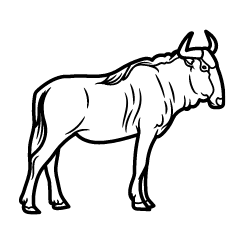
Every year, a sense of anticipation hangs over the grassland savannahs of East Africa. A light breeze ruffles yellow grass that stretches as far as the eye can see over rolling hills dotted with sparse trees. Hungry predators lounge in the shade, watching, waiting… Then a dark form appears on the horizon, followed by another and another until the looming wall of lowing animals begins to descend into the first valley. The herd is on the move – the wildebeest are coming.
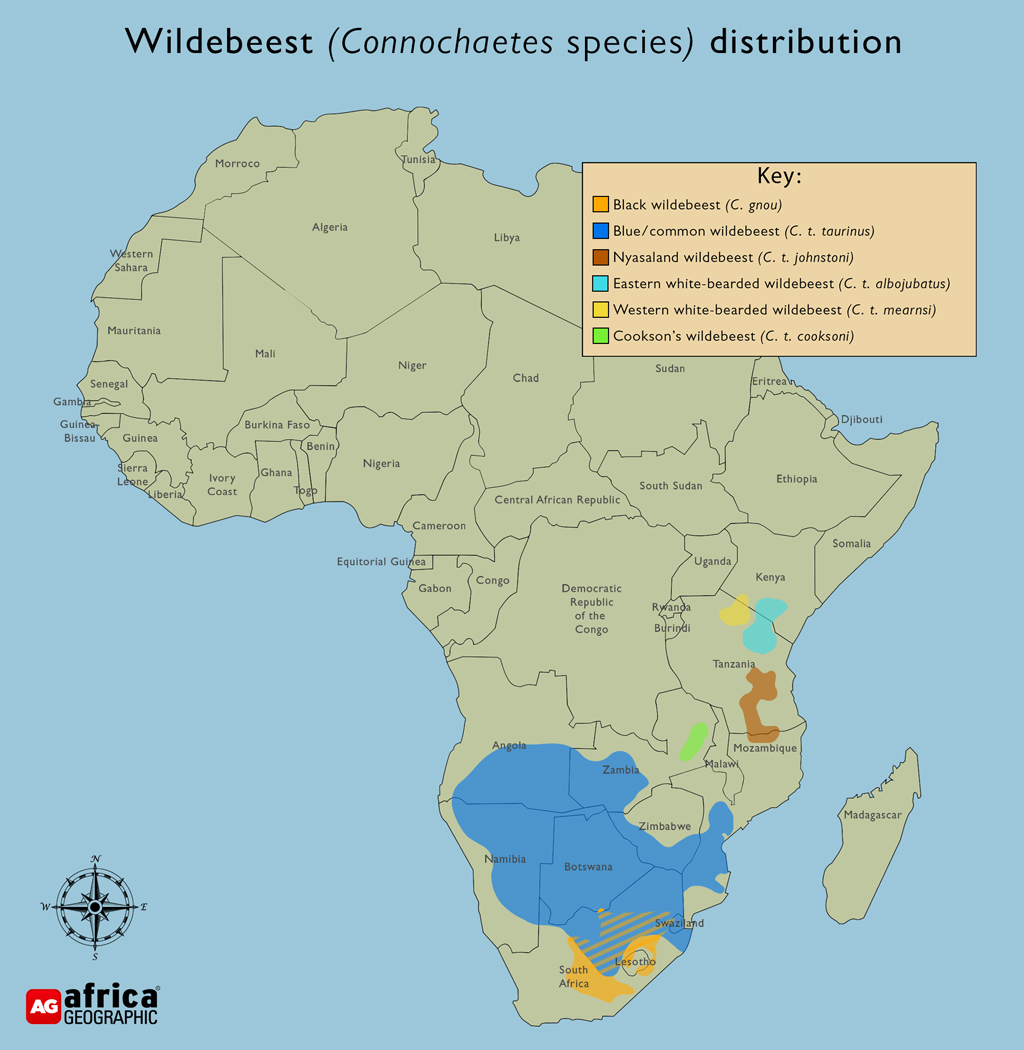
Colourful characters
Compared to the graceful kudu, winsome nyala or even ubiquitous impala, the wildebeest is not an antelope appreciated for its natural beauty. It is an ungainly-looking creature with a front-heavy body and an aquiline nose that does not inspire portrait photography. Indeed, apart from the spectacle that is the Great Migration (to book your African safari to see the Great Migration, click here), few visitors to Africa are content to spend more than a few passing minutes observing wildebeest. Yet beneath the rather homely exterior beats the heart of one of the toughest animals on the continent, and their social interactions can be profoundly entertaining for those who stop to enjoy them.
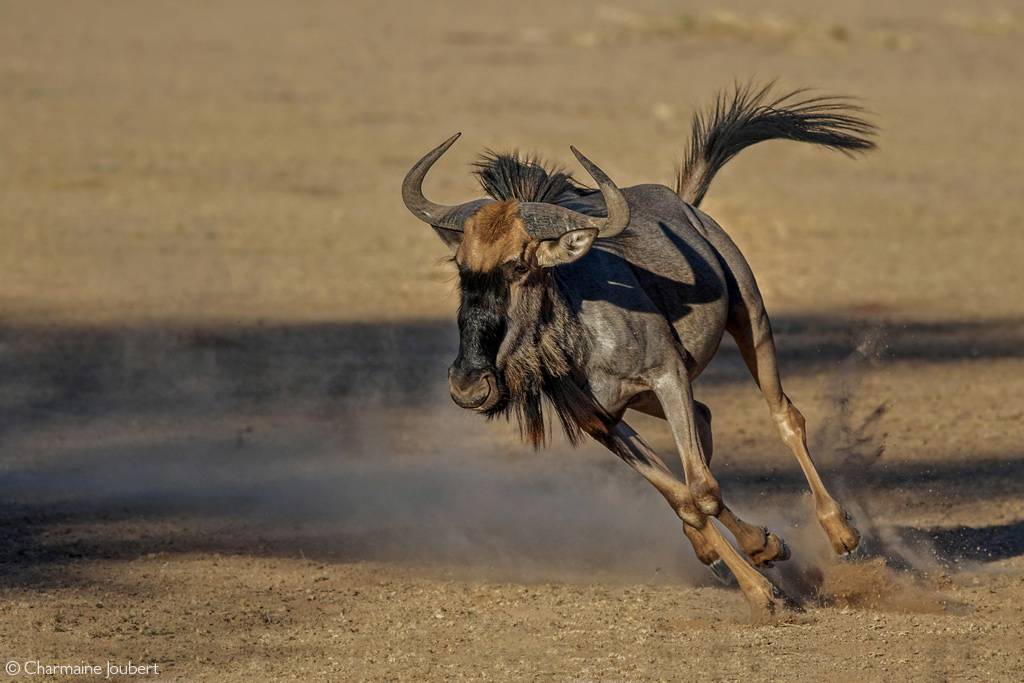
There are only two species of wildebeest – the well-known blue/common wildebeest (Connochaetes taurinus) and the black wildebeest (C. gnou) of southern Africa. The Connochaetes genus falls under the family Bovidae and subfamily Alcelaphinae, making their closest relatives the hartebeest, hirola, topi, tsessebe, blesbok and bontebok antelopes. Fossils of blue wildebeest indicated that they evolved at least 2.5 million years ago. Analysis of mitochondrial DNA suggests that black wildebeest diverged as a separate species in southern Africa around 1.5 million years later.
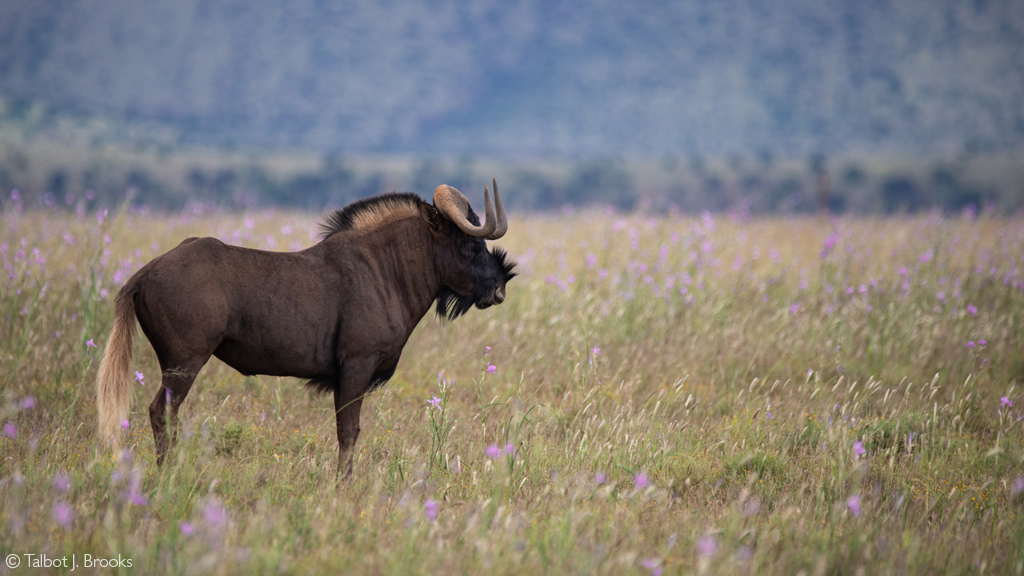
Blue wildebeest are found throughout much of East and southern Africa in various habitats, from dense woodland to floodplains. In contrast, the black wildebeest is found only in South Africa, Lesotho, and Eswatini in open grasslands and Karoo scrub. Though the two do not generally overlap, each species is distinctive and relatively easy to distinguish from the other. The most obvious difference is the shape of the horns – in blue wildebeest, these extend outwards from either side of the head before curving upwards at the tips. Those of the black wildebeest project forward towards the muzzle and then loop vertically. As the names imply, the coat colour is another distinguishing feature. However, the black wildebeest is more of a rich chocolate brown than black, and the colouration of the blue wildebeest varies depending on region and subspecies.
Differences in distribution and behaviour are usually sufficient to prevent the two species from interbreeding in the wild, but they have been known to hybridise to produce fertile offspring. The calves of both species are born tawny and will only start showing their adult colours after a few months.


Quick wildebeest facts
| Blue wildebeest | Black wildebeest | |
| Av. Height | M: 150cm F: 135cm |
M: 120cm F:108 cm |
| Av. Mass | M: 250kg F: 180kg |
M: 180kg F: 155kg |
| Gestation period | 8.5 months | 8.5 months |
| Colour | Grey-brown | Brown with a cream-coloured tail |
| Habitat | Wide range of habitats | Exclusively open grasslands |
| IUCN Red List | Least Concern | Least Concern |
Blue wildebeest subspecies
- Nominate species: blue/common wildebeest ( t. taurinus) – southern Angola, Namibia, Botswana, South Africa, Zimbabwe and southwestern Zambia
- Nyasaland wildebeest ( t. johnstoni) – northern Mozambique to central Tanzania
- Eastern white-bearded wildebeest ( t. albojubatus) – northern Tanzania to central Kenya
- Western white-bearded wildebeest ( t. mearnsi) – northern Tanzania to central Kenya, west of the Gregory Rift Valley
- Cookson’s wildebeest ( t. cooksoni) – Luangwa Valley in Zambia

Wildebeest migration madness
No article on these antelope would be complete without mention of the Great Migration of East Africa, where over a million blue wildebeest make their never-ending circular journey through the Mara-Serengeti ecosystems. Their quest for fresh grasses drives them onwards in enormous herds through predator-rich savannahs and across crocodile-infested rivers. It is a chaotic and often adrenaline-tinged phenomenon as hungry big cats, wild dogs (painted wolves), and hyenas throw themselves into the melee with joyous abandon to take advantage of this annual glut of prey. When not diving headlong off plunging riverbanks or leaping out of reach of snapping jaws, the herds gather on the plains from horizon to horizon, grunting, lowing and snorting at each other constantly. It is a sensory extravaganza for visitors to one of Africa’s greatest spectacles.
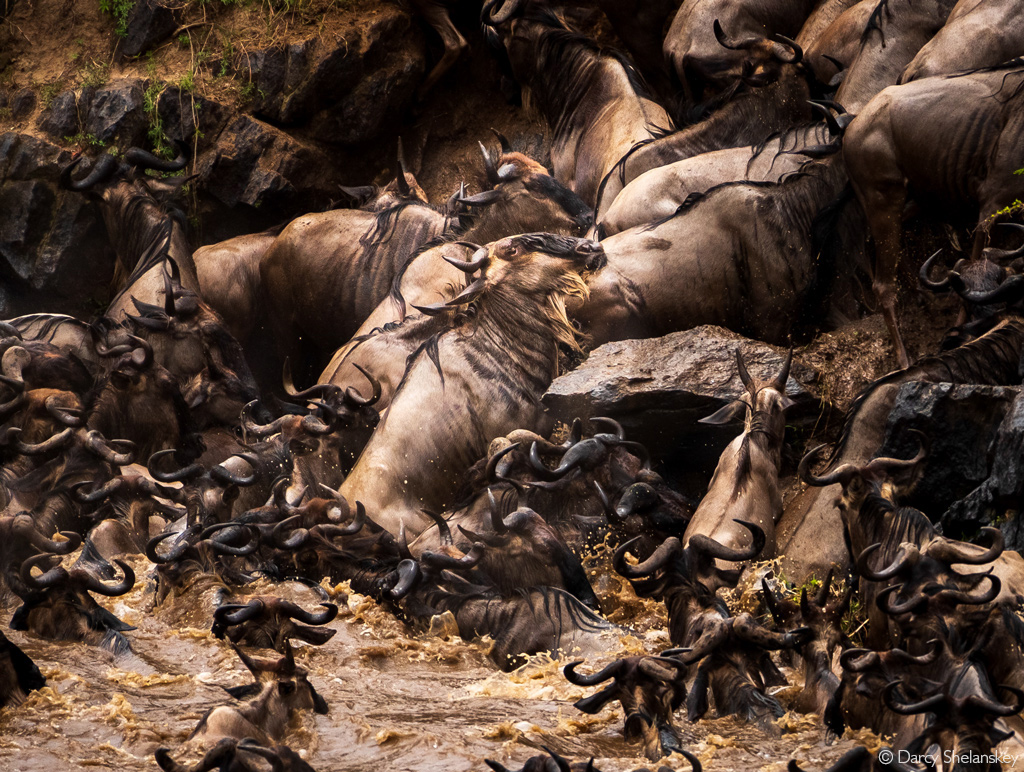
However, few people realise that Africa was once home to many such migrations. These have been stopped in their tracks over the centuries by fences and human encroachment (this is true for almost all large herbivore species, to some extent). Though perhaps not on the same scale, black wildebeest also migrated from the Karoo scrublands to the grasslands of South Africa’s highveld during the wet season. Similarly, many blue wildebeest herds in different ecosystems would have covered massive distances depending on rainfall and grass availability. Some of these migrations have survived, like that between Tarangire National Park and Lake Manyara National Park in Tanzania, albeit involving far fewer animals. The removal of some veterinary fences in Botswana also allowed zebra and wildebeest to resume their yearly journey between the country’s Okavango Delta and Chobe ecosystems to the Boteti River and associated salt pans. Other wildebeest migrations have all but collapsed, such as the migration of the Athi-Kaputiei ecosystems in Kenya and, due to veterinary fences, the movement of an estimated half a million wildebeest through Botswana’s Central Kalahari Game Reserve. Given the impact of the Great Migration on the habitats and inhabitants of the Maasai Mara and the Serengeti (everything from food provision to supplementing phosphorus in the rivers), there is no question that the loss of these migrations must have a profound effect on the ecosystems they left behind.
It is also important to note that not all wildebeest migrate, even in areas known for their migratory events. Sedentary populations are found throughout the range of the blue wildebeest, including the Mara, Serengeti and Tarangire. In these populations, dominant males maintain small, set territories throughout the year while breeding herds and groups of non-territorial bachelors move across more extensive home ranges.
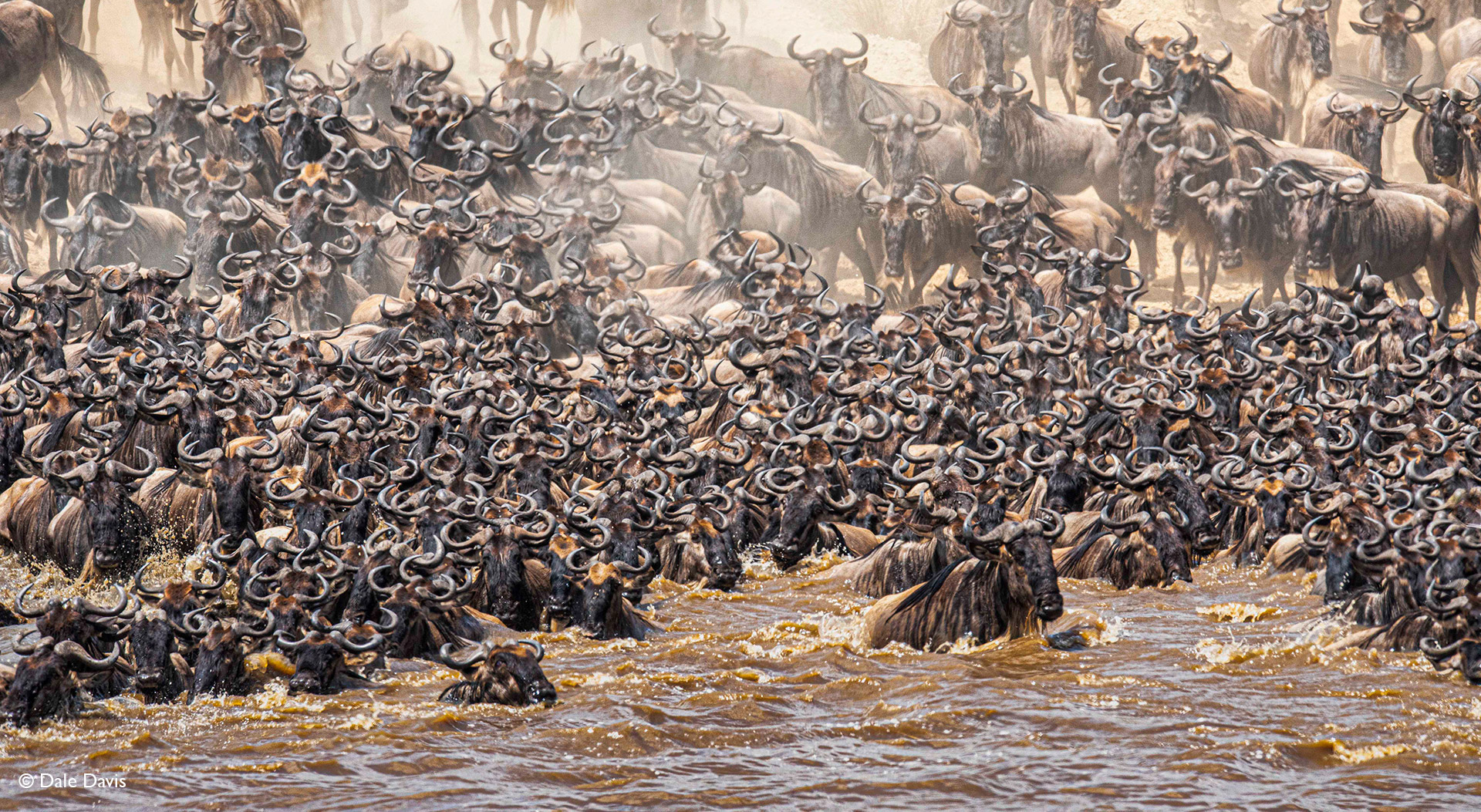

Bewilderbeest*
Wildebeest are not considered among the great thinkers of the African plains, but that does not detract from their entertainment value, even at the more “ordinary” sightings. When large herds gather in their thousands, the constant contact grunting creates a din that resounds in one’s ears long after the day has ended. During the rutting season, these are interspersed with the hilarious groans of the males looking to establish a temporary territory of just a few square metres. They do this through threat displays and the occasional clash of horns, all while trying to keep half an eye on the females wandering into their little patch. By the time a male has seen off an opponent, the females have usually ambled away, and the whole process has to begin again.
The males of sedentary populations defend permanent territories, with the most coveted being around waterholes. The lord of any such desirable patch stakes his claim through scent marking, which he deposits by rubbing facial glands on suitable trees and scraping the pedal gland between the toes on the ground. His efforts will be rewarded by a more regular presence of breeding herds.

Whether migratory or sedentary, wildebeest are seasonal breeders, and up to 90% of the calves are born within a three-week interval. The timing of the birthing season is regionally dependent, with southern African calves born around the beginning of December and birthing reaching its peak in February in East African populations. The wobbly brown calves are quick to find their feet and, despite the precarious nature of their very existence, are exceptionally playful and clownish.
Want to see wildebeest in the wild or follow the chaos of the Great Migration? Get in touch with our travel team to discuss your safari – details below this story.
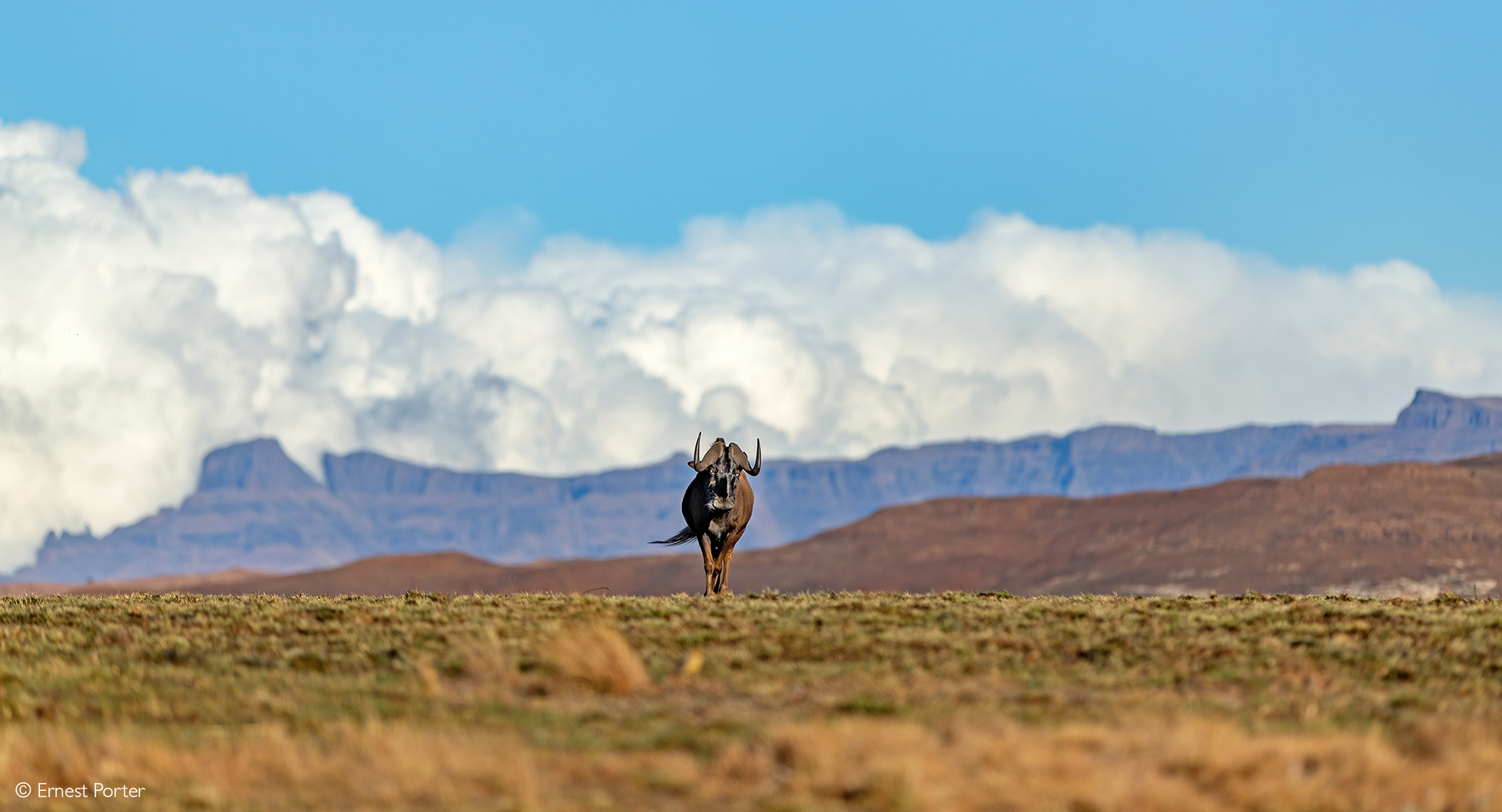
* Our use of the term “bewilderbeest” with credit to the late Sir Terry Pratchett
To comment on this story: Login (or sign up) to our app here - it's a troll-free safe place 🙂.![]()




